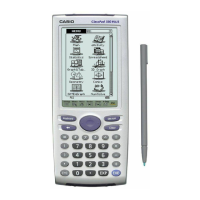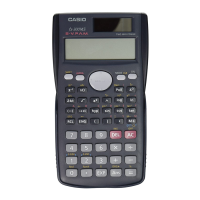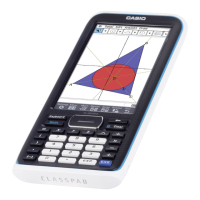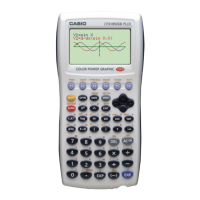20021201
The “piecewise” function returns one value when an expression is true, and another value
when the expression is false.
The syntax of the “piecewise” function is shown below.
piecewise(<condition expression>, <return value when true>, <return value when false or
indeterminate>[ ) ]
or
piecewise(<condition expression>, <return value when true>, <return value when false>,
<return value when indeterminate>[ ) ]
Problem
Use this keyboard:
Operation
mth abc cat 2D
For the expression Func [piecewise] 0 X, 1,
0 < x (x = variable), return 1 2 , 0 w
when x is greater than 0,
2 when x is 0 or less, and 0
when x is undefined.
k Angle Symbol (∠)
Use this symbol to specify the coordinate format required by an angle in a vector.
You can use this symbol for a vector only.
Problem
Use this keyboard:
Operation
mth abc cat 2D
Convert the polar OPTN Func Change the [Angle] setting to
coordinates r = 2, “Radian”.
θ
= π/4 to rectangular [toRect] [9 2 ),
coordinates. [1, 1] 7/ 4 )]w
k Derivative Symbol (’)
A single derivative symbol indicates the first derivative of an equation in the format:
<variable name>’.
Problem
Use this keyboard:
Operation
mth abc cat 2D
Solve the differential CALC SMBL Cmd [dSolve] Y =X,X
equation y’ = x. ,Yw
{y = 0.5 · x
2
+ const (1)}
2-4-10
Function Calculations
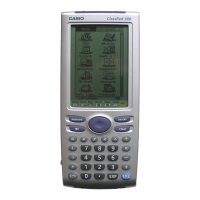
